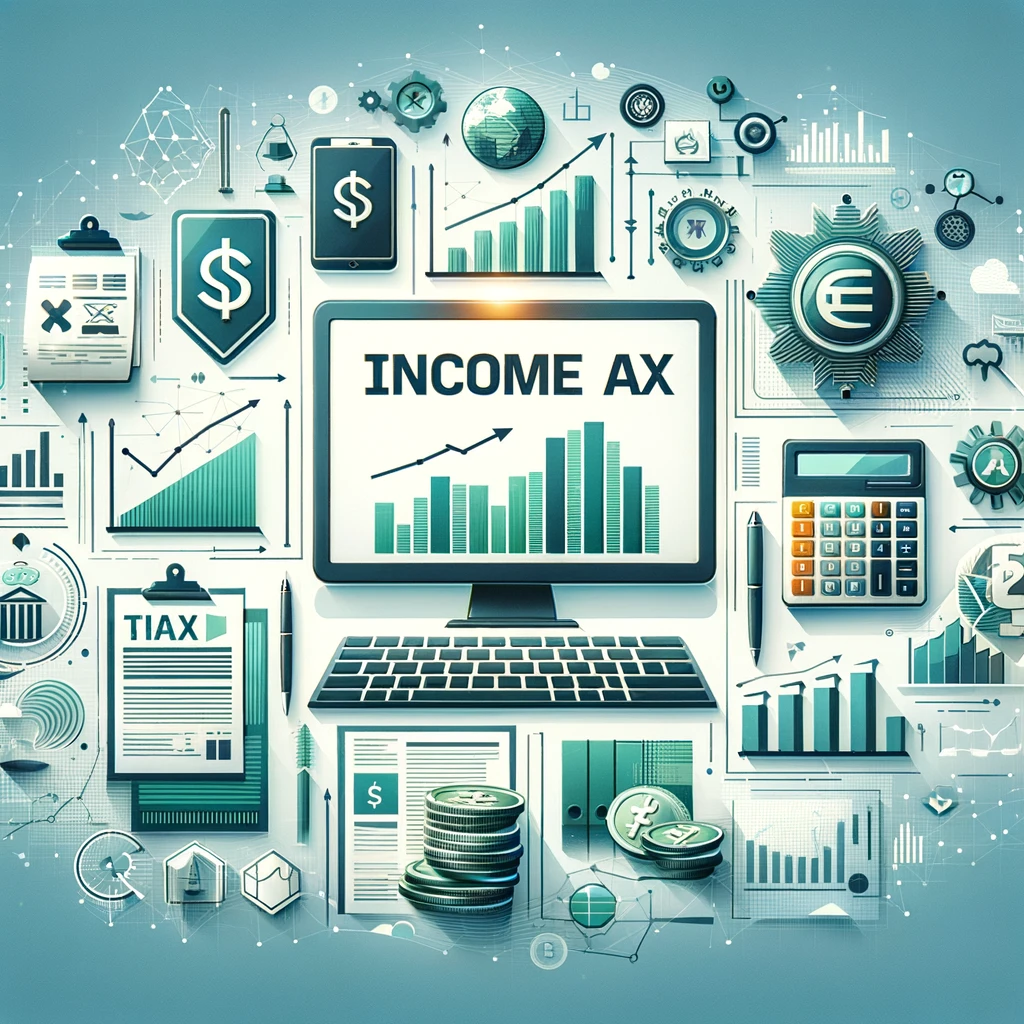Let’s dive into the ins and outs of MTD for Income Tax, explore its benefits, and consider alternatives for those who may find using software challenging. Paying taxes is as inevitable as the rising sun. In the UK, the landscape of tax administration is undergoing a significant shift with the introduction of Making Tax Digital (MTD) for Income Tax. This initiative is designed to move the UK towards a fully digital tax system. For taxpayers, particularly the self-employed and landlords, this means adapting to new ways of record-keeping and tax filing. But what does it mean for personal income taxpayers who aren’t self-employed or landlords?
Understanding MTD for Income Tax
What is Tax Digital?
MTD is a UK government initiative that aims to make it easier for individuals and businesses to get their taxes right and keep on top of their affairs. It involves maintaining digital records and using software to submit tax information to HM Revenue and Customs (HMRC).
Who is Affected by MTD for Income Tax?
Currently, MTD for Income Tax is focused on those who are self-employed and landlords with annual business or property income above £10,000. However, it’s worth noting that this threshold could change, and the initiative may expand to include additional taxpayers.
The “Making Tax Digital” (MTD) for Income Tax Self Assessment (ITSA) initiative aims to modernize the tax system, affecting a range of taxpayers and businesses. Here’s a table illustrating who will be affected by MTD for Income Tax:
| Group | Description |
|---|---|
| Self-employed Individuals | Those running their own business and filing Self Assessment tax returns with income above £10,000. |
| Landlords | Individuals renting out property, with gross rental income above £10,000 annually. |
| Partnerships | Business partnerships (excluding those operating as limited liability partnerships) with income above £10,000. |
| Trusts and Estates | Trusts, estates, and other types of organizations with taxable income and gains above £10,000. |
Note: The income threshold of £10,000 is a key criterion for determining who needs to comply with MTD for Income Tax. This means that individuals and businesses with income from self-employment or property above this threshold will need to keep digital records and use software to manage their tax affairs digitally.
The Rollout of MTD for Income Tax
Timeline and Phases
MTD for VAT has already been implemented, and the next phase, MTD for Income Tax, is scheduled to start from April 2024. This phased approach allows taxpayers to adjust to the new system gradually.
Benefits of MTD for Taxpayers
Simplicity and Efficiency
One of the key advantages of MTD is the simplification of tax affairs. Digital record-keeping aids in more organized and accessible financial information. It’s like switching from a cluttered desk full of papers to a neatly organized digital file cabinet.
Improved Accuracy
Digital tools can reduce errors by automating calculations, thereby improving the accuracy of tax submissions. It’s akin to having a math whiz by your side, double-checking your numbers.
Real-Time Overview
MTD allows taxpayers to see an up-to-date view of their tax liabilities. This real-time information is like having a financial health monitor, giving you a clearer picture of where you stand.
Impact on Personal Income Taxpayers
Potential Inclusion in MTD
While MTD currently targets the self-employed and landlords, it’s conceivable that personal income taxpayers might be included in the future. Staying informed and prepared for these potential changes is crucial.
Choosing the Right MTD Software
HMRC-Approved Software
To comply with MTD, you’ll need to use HMRC-approved software. This software can range from sophisticated accounting applications to more straightforward tax assistance tools.
Considerations for Selecting Software
When choosing software, consider factors like cost, usability, and the specific features that cater to your tax situation. It’s important to select a tool that feels like the right fit for your digital tax journey.
Alternatives to MTD Software
Spreadsheet Usage
For those who are unable or unwilling to use dedicated MTD software, HMRC may permit the use of spreadsheets in conjunction with bridging software. This method allows you to maintain digital records without fully abandoning familiar tools.
Bridging Software
Bridging software acts as a translator, converting information from your spreadsheet into a format that can be submitted to HMRC. It’s a helpful stepping stone for those taking gradual steps towards full digitalization.
Preparing for the Transition to MTD
Keeping Digital Records
The shift to MTD requires maintaining digital records of your income and expenses. This change is a move from the pen-and-paper era to the digital age of tax management.
Training and Support
Taking advantage of training opportunities and seeking support can ease the transition to MTD. Various resources are available to guide taxpayers through the new requirements and software usage.
Addressing Concerns and Challenges
Data Privacy and Security
With the digitalization of tax records, data privacy and security are paramount. Ensuring that your chosen software has robust security measures is like putting a secure lock on your digital file cabinet.
Dealing with Technical Issues
Adapting to new technology can come with hiccups. Being proactive in learning how to troubleshoot common technical issues will save time and frustration down the line.
Financial Implications of MTD
Potential Cost of Software
While MTD aims to simplify tax filing, there may be costs associated with purchasing software. It’s essential to budget for these expenses as part of your tax planning.
Impact on Tax Refunds and Liabilities
MTD’s real-time information could potentially lead to quicker tax refunds or earlier notifications of tax liabilities. This immediacy can help with financial planning and cash flow management.
The Future of Tax Administration
Ongoing Developments
As technology evolves, so will the features and capabilities of MTD software. Staying updated with these developments will ensure that you are utilizing the best tools for your tax needs.
Long-Term Vision for MTD
The long-term vision for MTD is a more efficient, effective, and easier tax system for all. It’s a journey towards a seamless integration of taxation into our everyday digital lives
Conclusion
Making Tax Digital for Income Tax is not just a regulatory change; it’s a transformative step towards a modernized tax system. For the self-employed and landlords, it’s time to embrace the digital world and reap the benefits of an organized, accurate, and efficient approach to tax management. Meanwhile, personal income taxpayers should keep an eye on the horizon, as the digital wave of MTD may soon extend further. Adapting to MTD may seem daunting, but it presents an opportunity to streamline financial affairs and focus on what truly matters – growing your business or enjoying your investments.
With the right tools, support, and mindset, navigating the digital tax seas can be a smooth sailing experience. As we chart the course of MTD, let’s look forward to a future where tax management is less of a storm to weather and more of a breeze to enjoy.
FAQs
1. What is Making Tax Digital (MTD) for Income Tax?
MTD for Income Tax is a UK government initiative requiring self-employed individuals and landlords with annual business or property income above £10,000 to maintain digital tax records and use software to submit their tax information.
2. When will MTD for Income Tax come into effect?
MTD for Income Tax is set to start from April 2024 for self-employed individuals and landlords with income above the £10,000 threshold.
3. Can I still use spreadsheets for tax records under MTD?
Yes, you can use spreadsheets if they are combined with bridging software that allows you to submit the required information to HMRC in a compatible format.
4. Will MTD affect personal income taxpayers who are not self-employed or landlords?
While MTD currently focuses on the self-employed and landlords, there is potential for it to be rolled out to include personal income taxpayers in the future.
5. What are the benefits of MTD for taxpayers?
MTD can simplify record-keeping, improve the accuracy of tax calculations, and provide a real-time overview of tax liabilities, which can enhance financial planning and management.



